Embed presentation
Downloaded 45 times
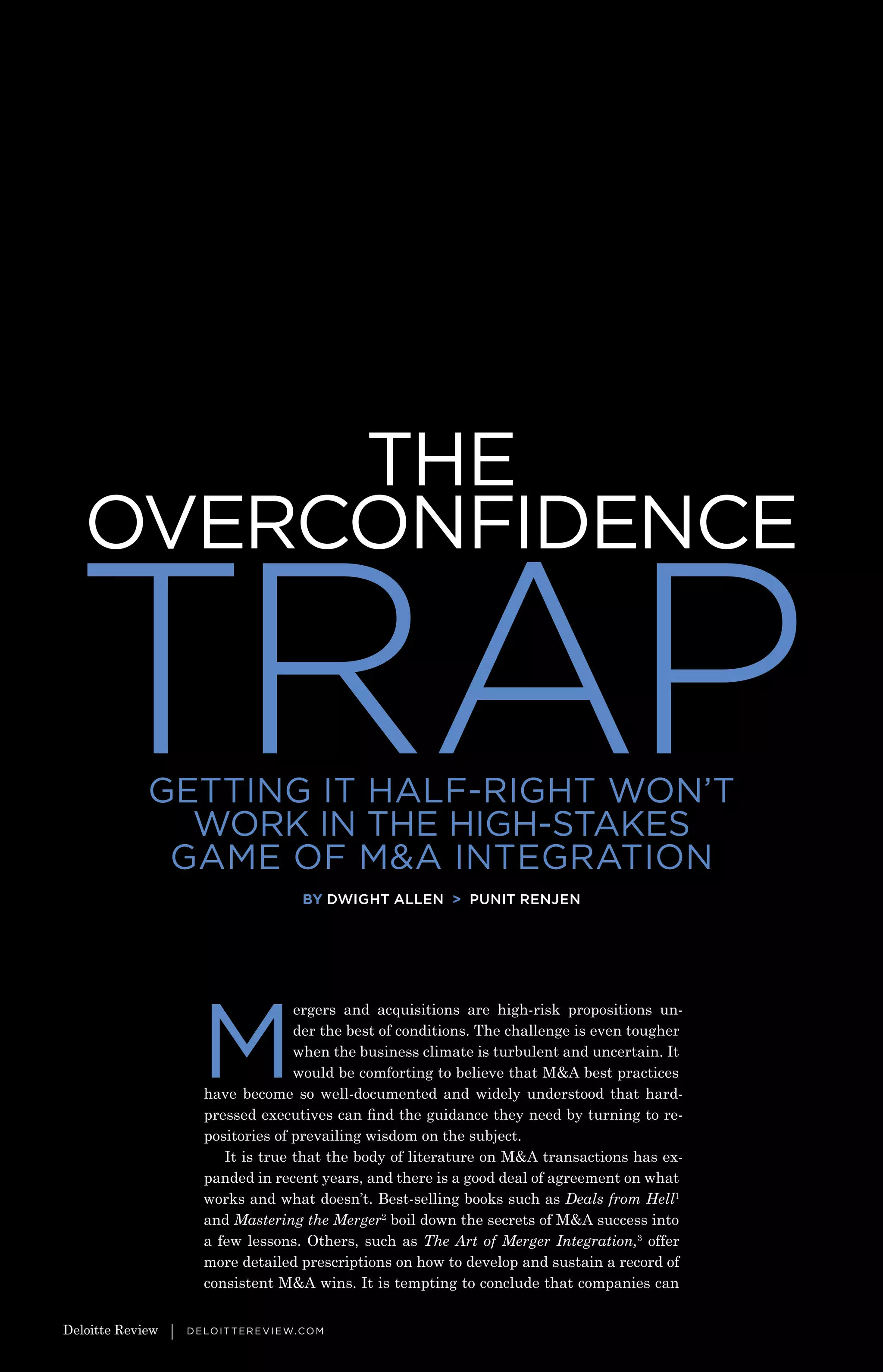

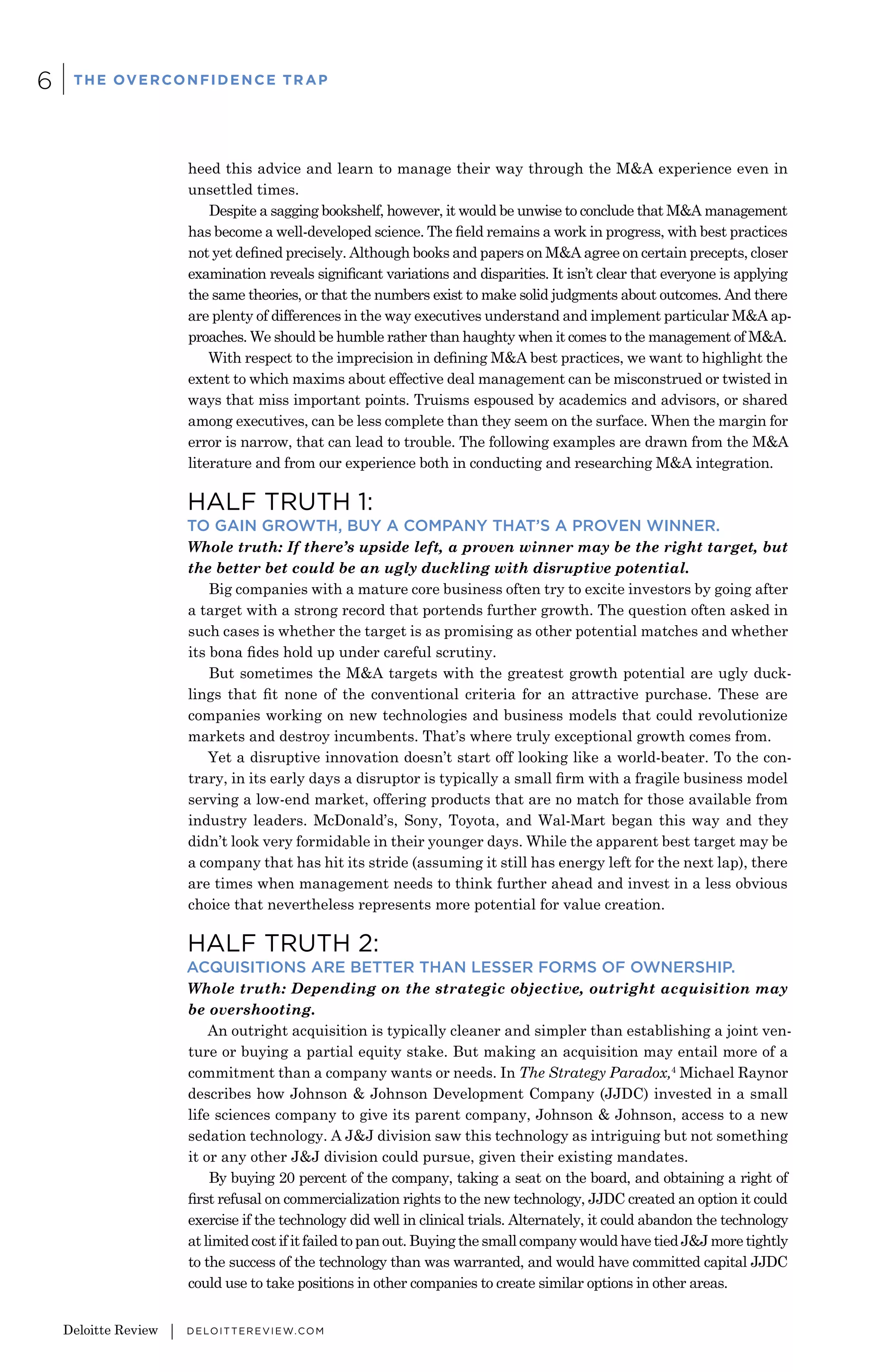
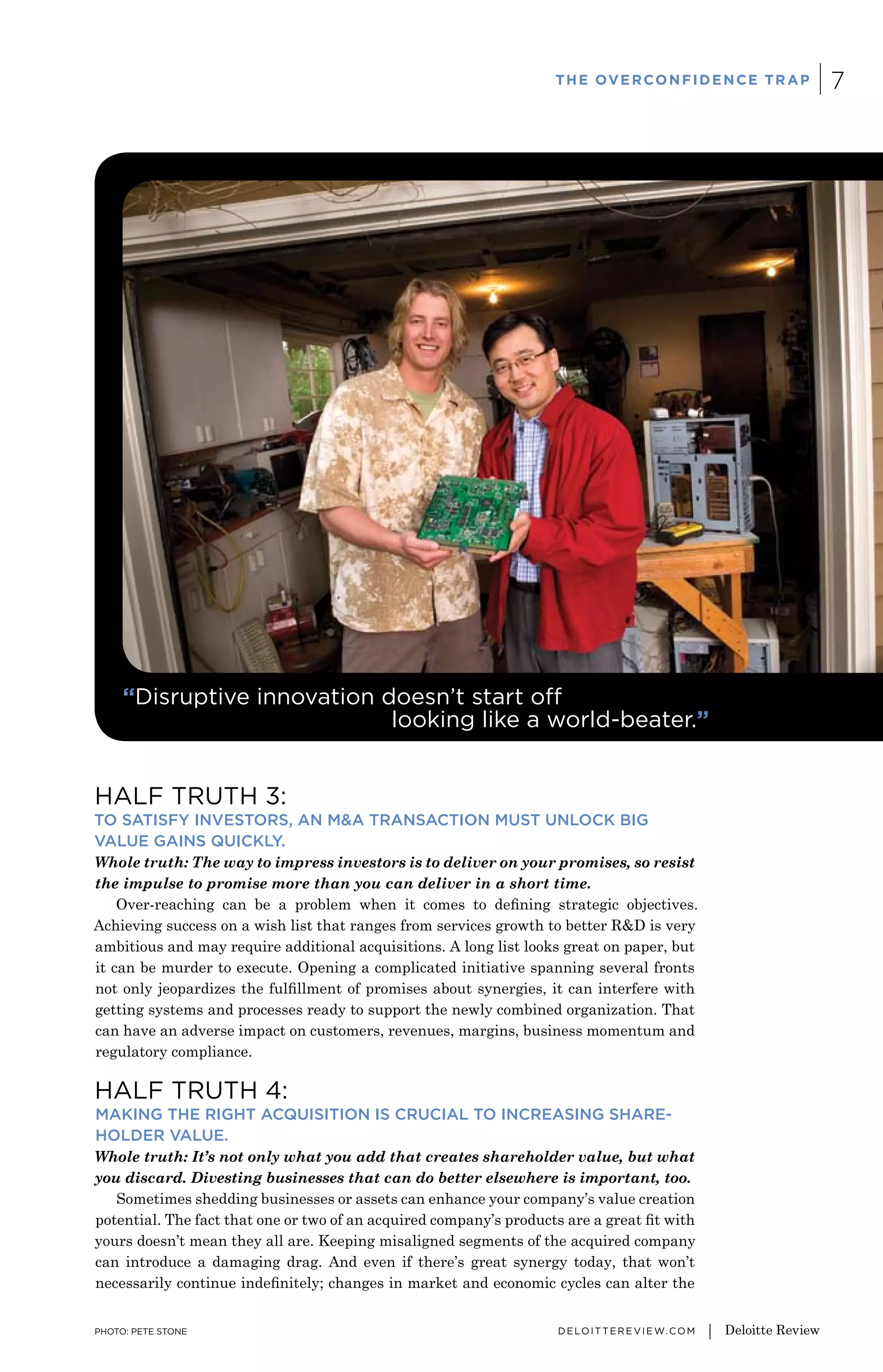
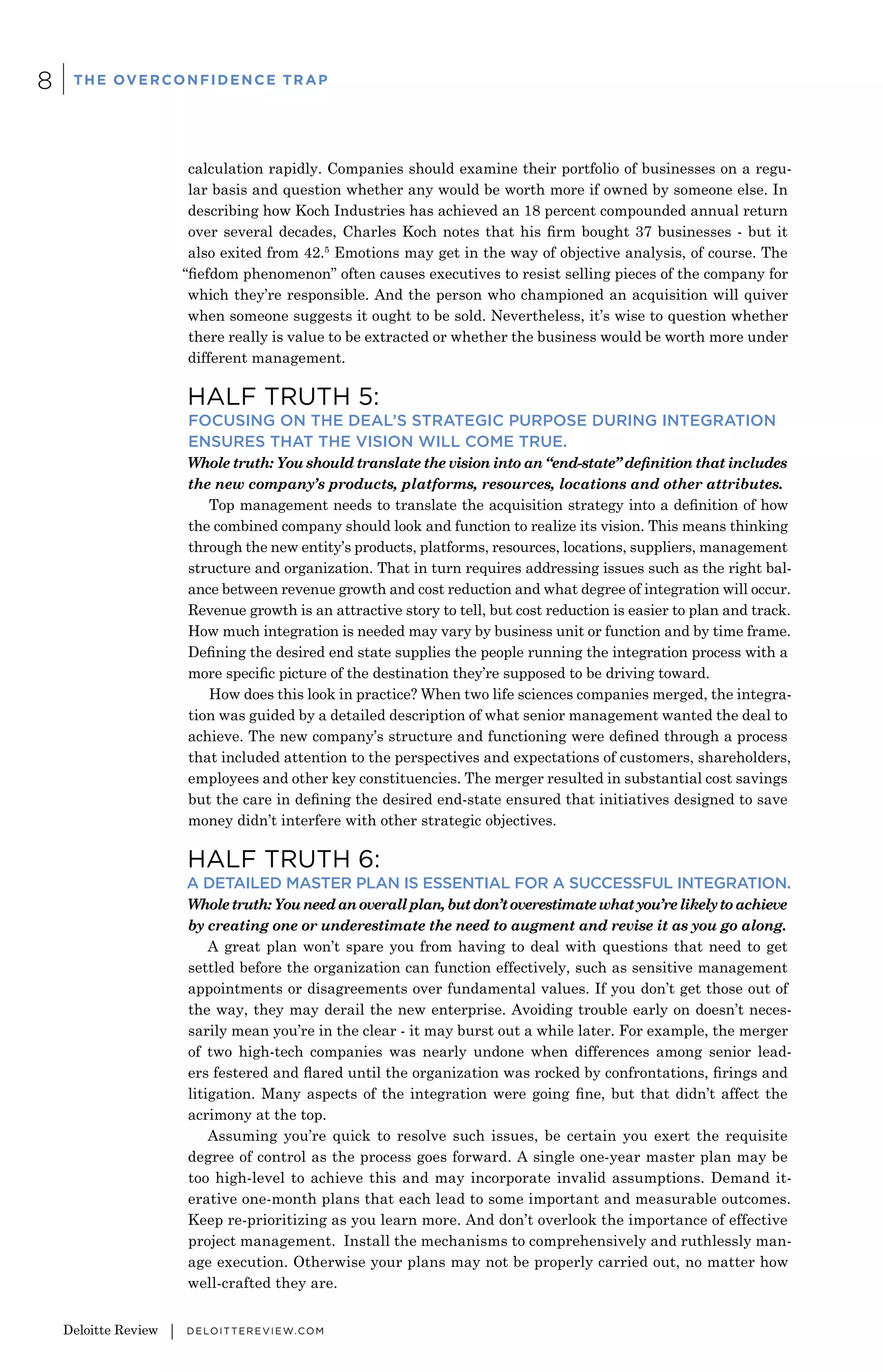
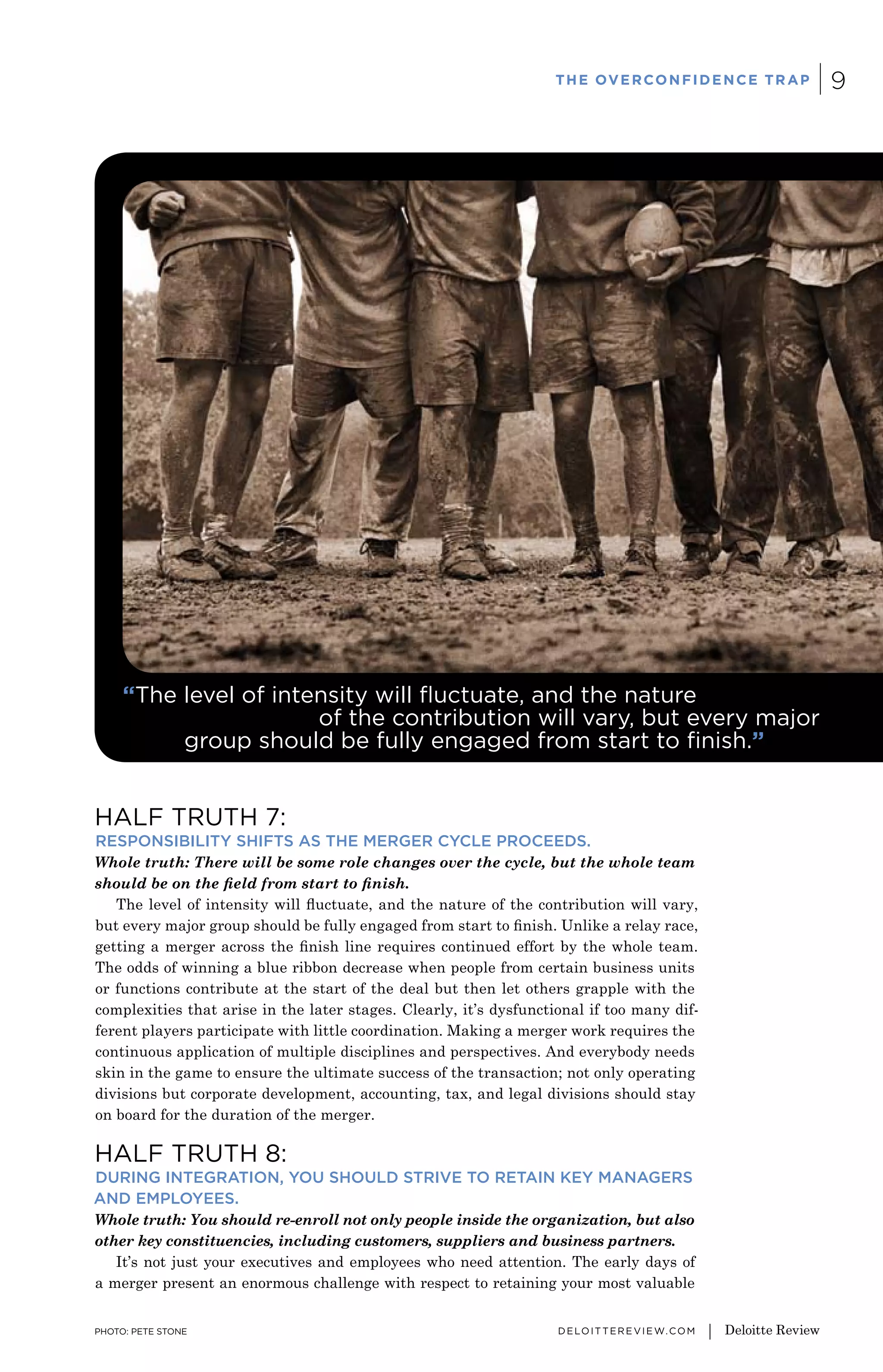
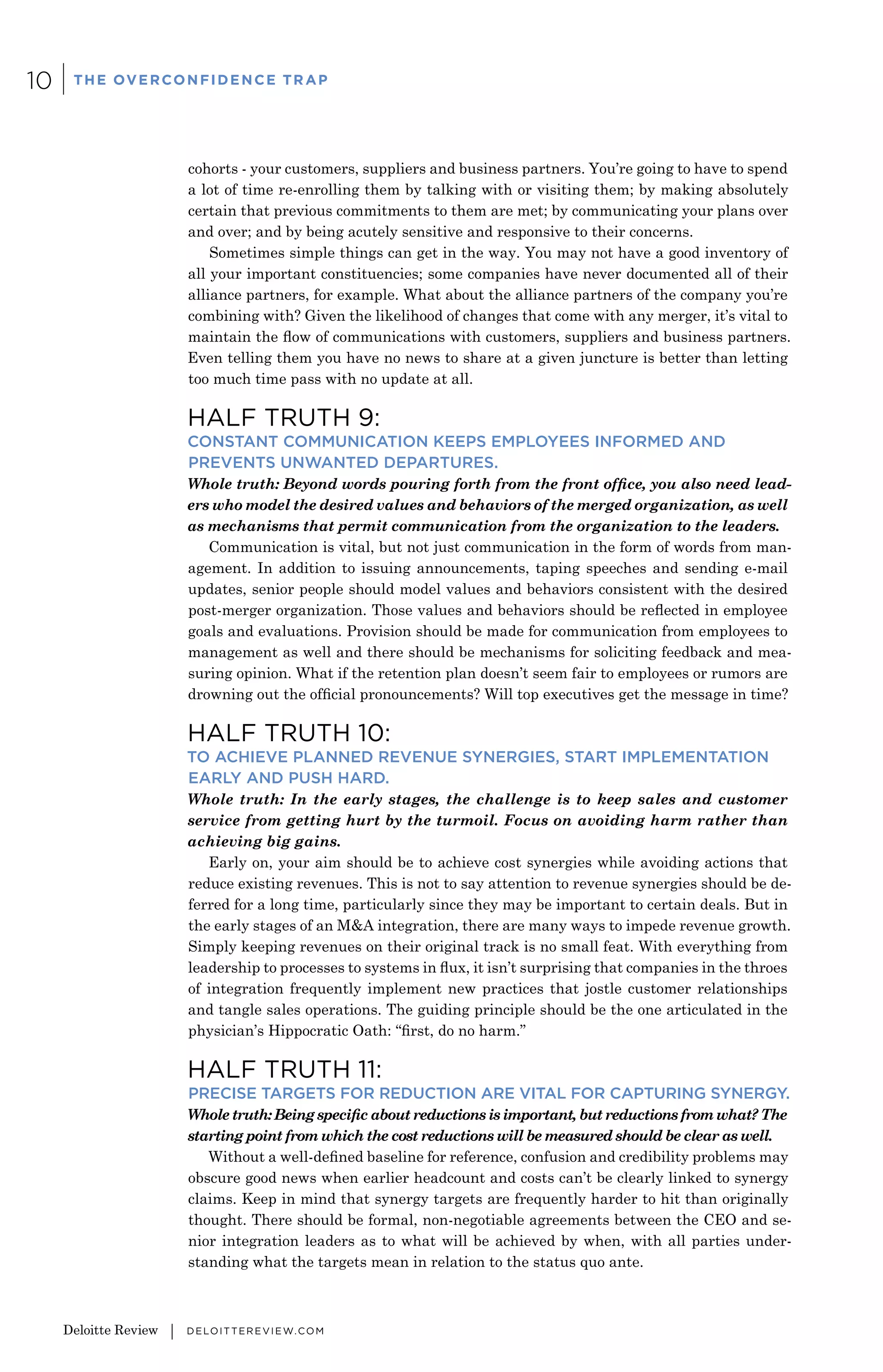
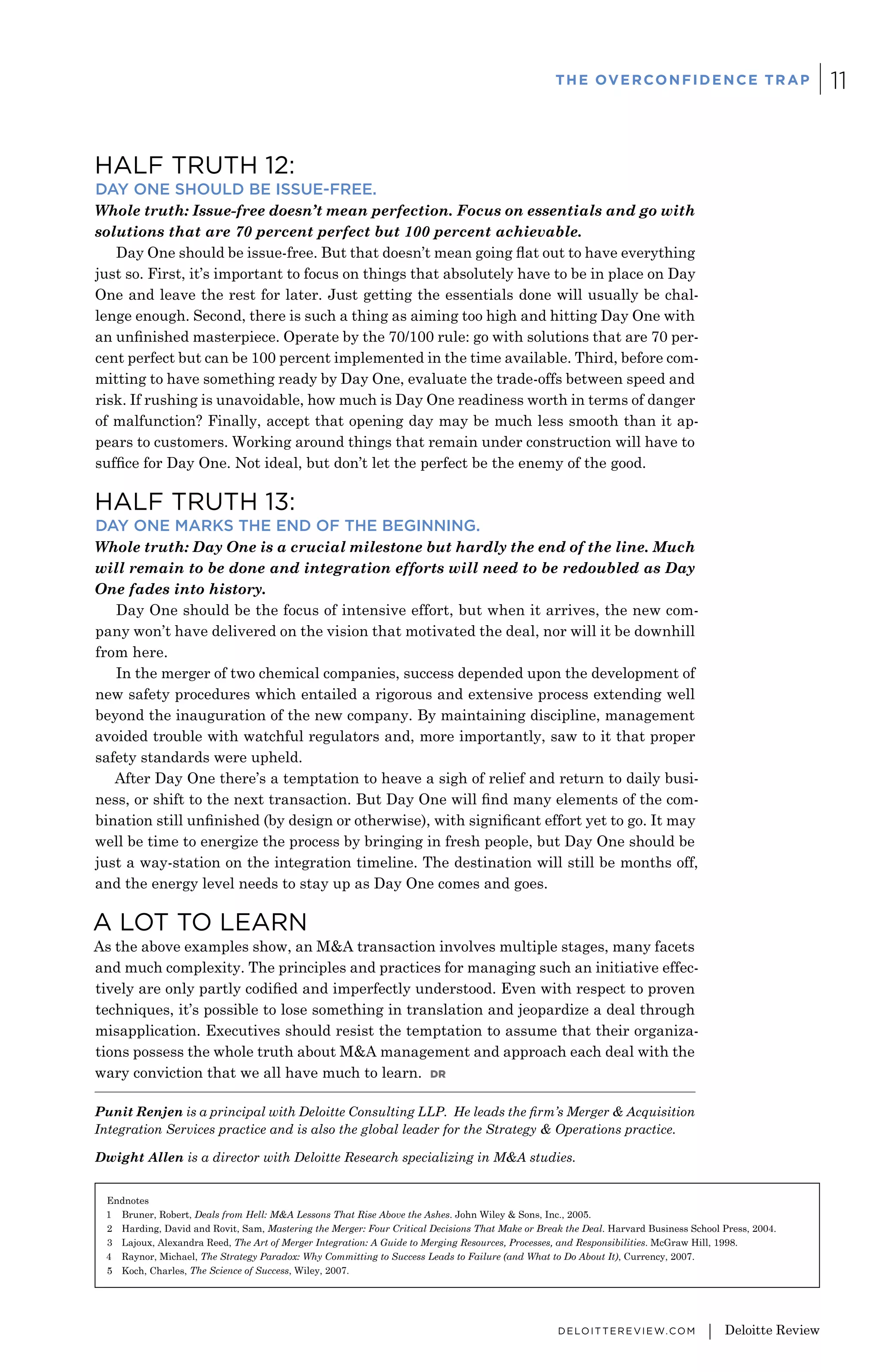
The document provides a summary of common "half-truths" regarding mergers and acquisitions best practices. It discusses 10 commonly held beliefs and provides a more complete "whole truth" for each one. The document cautions against overconfidence in M&A best practices, noting significant variations and a lack of definitive outcomes. It emphasizes humility is needed when managing M&As, as maxims can be misconstrued if not fully understood in context.







